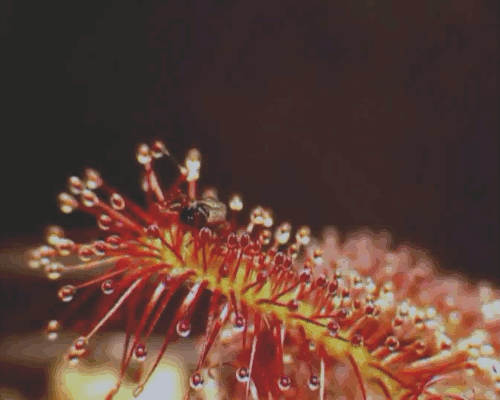How to Grow
Plants that feast on animals - Insectivorous plants
As we all know plants are grown in the soil. They absorb the nutrients present in the soil to grow healthy. Generally Compost and fertilizers are added to the soil to make it fertile and in turn to make the plants healthy. So compost and fertilizers are the main sources of nutrients for the plants. What if I say certain plants eat other living creatures to grow instead of fertilizers??
Yes, you got it right. There are a certain variety of plants which feed on other living creatures especially on insects for food. These plants are called Carnivorous plants or Insectivorous plants. Let us know about some of the insectivorous plants.
1. Pitcher plant or Nepenthes plant

Image source
Nepenthes plant or commonly called as Pitcher plant is a variety of carnivorous plant. Its pitcher-shaped leaves have given this name as Pitcher Plant. It has a unique type of leaves called Pitfall Traps. These traps produce a sweet pigment which attracts the insects and trap them inside a big cavity. The cavity contains the digestive liquid which digests the insects and serves as nutrients for the plant.

See the PItcher plant Trapping its Prey

Generally, Flies and insects are the common prey for this insectivorous plant. The surface of the pitfall trap will be slippery. Once the insect gets attracted by the nectar, they come towards the trap and fall inside the cavity. Some species also have hair like structures or waxed surfaces on the inner side of the cavity such that the hairs and the wax surface do not leave the insects to climb up. Once the insect fall inside the cavity, the liquid present in the cavity digests the insect and converts it into the essential form and helps for the plant's growth. These plants grow in the soil which lacks in minerals or in acidic soil. So they obtain the necessary nutrients by digesting the insects. This variety of plant is grown in the high rainfall areas of South America.
2. Venus Flytrap

Image source
Venus Flytrap plant is another variety of plant which belongs to insectivorous plants category. Its claw like structure with the long finger-like protrusions on the terminals of the leaves works as the trap. The inner side of the trap has small hairs which are sensitive to the movement of the insects. The mechanism has the ability to distinguish between the genuine prey and fake stimulations. The hair-like patterns on the inner part must get stimulated at least twice for the trap to shut. Once the insects stimulate the hairs, the trap shuts and the insects will be stuck inside. If the prey starts moving inside the trap or tries to escape, it tightens the trap and the digestion process will be vigorous. The trap typically opens within 12 hours waiting for next prey to get trapped.

See the Venus Flytrap In action

Some of the venus flytrap plants are fully green in color and some have red shades on the inner part of the trap. Generally, beetles, crawling insects, spiders and other terrestrial insects are the major prey for this insectivorous plant. Apart from these insects, sometimes even flies are trapped by this plant. They utilize the nutrients from the insects to grow as the soil in which they grow does not have any nutrients in it. This variety of plant can be seen in East coasts of North Carolina and South Carolina, United States.
3. Drosera

Image source
Drosera, or commonly called as Sundew is another insectivorous plant. It is the largest genera of carnivorous species. There are nearly 124 varieties belonging to this species. Sundew plants capture the insects and digest them using the glands present on the surface of the leaves. Tentacles will be present on the glands with sticky fluid at the tip of the tentacles. These tentacles trap the insects which sit on the leaves and digest them gradually by rolling them in the leaves.

Drosera Having its meal

Most of the terrestrial and flying insects are preys of this insectivorous plant. The digestive liquid secreted at the tip of the tentacles attracts the insects towards the sundew plant and hence the insects are trapped by the same fluid. The insects think it is nectar and comes to suck the nectar. But they fall into the trap of the Drosera plant. Once the insect gets trapped in the sticky tentacles, the leaf slowly folds, rolls the insect and digest it. As the soil in which they grow does not have any nutrients, they utilize the nutrients from the insects for their growth. This kind of plants can be seen in Wallums of coastal Australia, Fynbos of South Africa and some European countries like Germany, Austria, Switzerland etc.,
Popular Searches: Garden Accessories for Sale, Compost Bin India, Plastic Flower Pots Online, Contemporary Plant Pots, Hanging Pots Online, Colourful Plant Pots, Bird Feeders Online, Rectangular Planters Online, Small Pots Online, Flower Pots Online, Kitchen Waste Compost Bin, Balcony Railing Planter




Thank you for the material it very use full. It contains more information about the types of carnivores plants with a short and small video. Thank you
At what environment it grow
When venus flytrap is available to buy?
Nice information given but how the mechanism work do it have some muscle to move? . Intersted in growing if available.
He to get these plants n related information please.